Cards In This Set
| Front | Back |
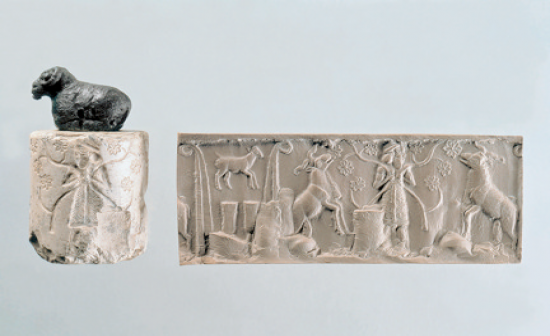 What is this image? |
Cylinder seal of priest-king feeding sacred sheep, ca. 3300 BCE
- appears to show the feeding of a temple herd, which provides a significant portion of the temple's wealth, while the human figure's distinctive costume and hat may identify him as a priest-king - would decorate the seals because they were crucial for food storage and keeping things fresh |
 What is this image? |
Babylonian deed of sale, written in cuneiform, ca. 1750 BCE
- the impressions here were made by a stylus in soft clay, people believe it may be the first work of writing |
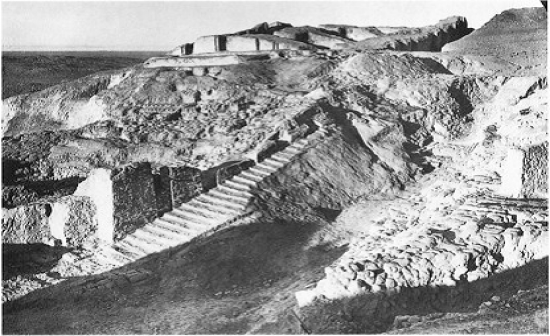 What is this image? |
Remains of the “White Temple”
on its ziggurat, ca. 3500-3000 BCE
Uruk, Iraq
- had an indirect approach to the altar in which the stairs and ramps led around so that the viewer could admire the technical accomplishments of the area |
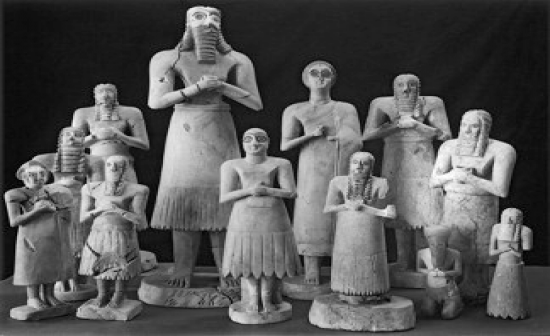 What is this image? |
Statues from Abu Temple, Tell Asmar, ca. 2700-2500 BCE
- seeing was a major channel of communication with gods and the sculptures may have been responding to the god's awe-inspiring nature with eyes wide open in admiration |
 What is this image? |
Royal Standard of Ur, ca. 2600 BCE
- contains panels of red limestone, shell, and lapuis lazuli inlay set in bitumen - the panels all together show the king as warrior, priest, and meditator with the gods (dual aspects of kinship) |
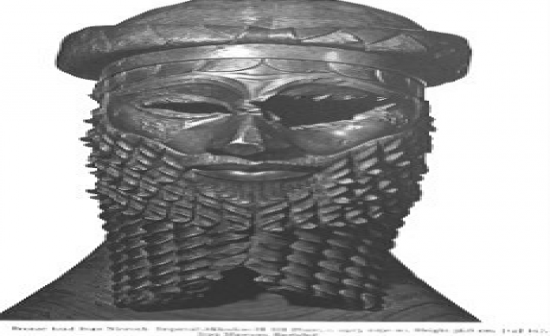 What is this image? |
Head of an Akkadian ruler,
ca. 2250-2200 BCE
- statue was treated as though it were the living king himself, they gouged out the eyes, cut off the nose, etc. - beard is like armour, stylized, and is very controlled making him seem eternal rather than in the moment |
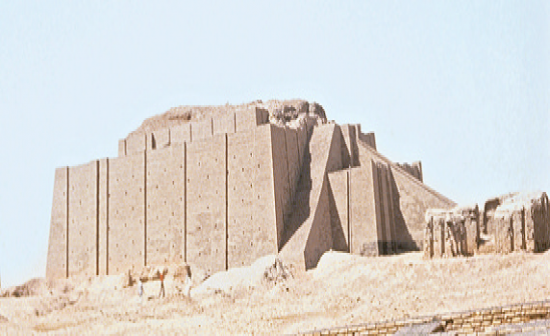 What is this image? |
Great Ziggurat of King Urnammu, Ur, ca. 2100 BCE
- used huge staircases for a dramatic ascent into the temple so that those who were able to go inside felt the importance of the building and recognized its power |
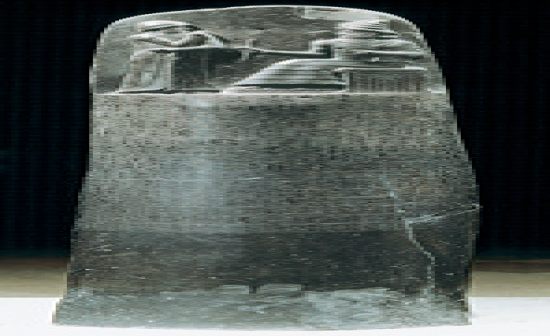 What is this image? |
Stele with the Law Code of Hammurabi, ca. 1760 BCE
- king is standing while the god is seated and is receiving the rights of ruleship directly from a god which shows that he is worthy and righteous |
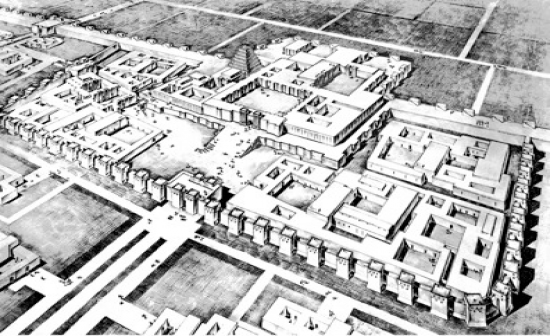 What is this image? |
Reconstruction of the Citadel of Sargon II, Dur Sharrukin, ca. 721-705 BCE
- to reach the palace, visitors had to cross the open plazas and climb broad ramps - the citadel revealed the privileged relationship between the king and the gods |
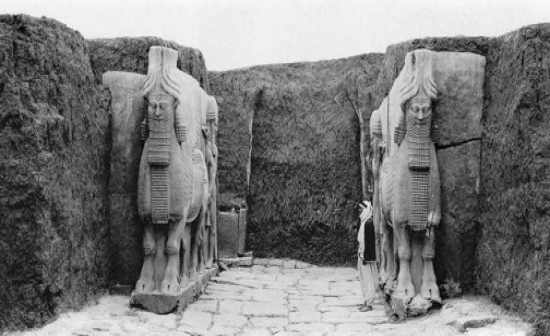 What is this image? |
Gate of Citadel of Sargon II, with lamassu, 742-706 BCE
(photo taken during excavation)
- the figures are lamassu, winged, human-headed bulls, that were made to demonstrate power to whomever entered |
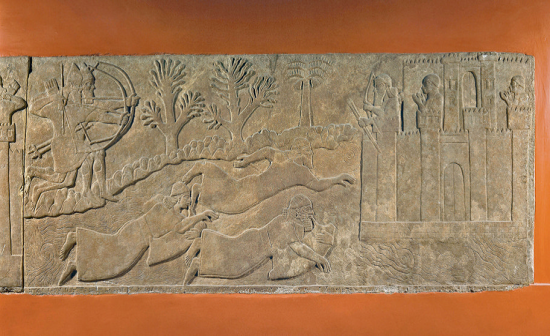 What is this image? |
Fugitives crossing a river, ca. 883-859 BCE
- the archer's faces are shown here as tense and concentrated, you can see this because the bowstrings are pulled behind their heads as a way to make this clear |
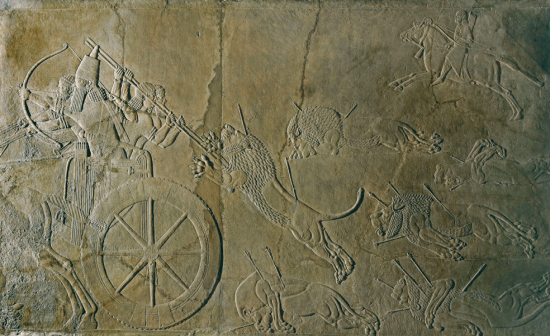 What is this image? |
Lion hunt, ca. 645 BCE
- can't see the lion that the king is attacking but the servants are keeping one lion who is lunging at bay so that the king may finish him off - lion is in a sense a king and they are shown fallen and beaten, displaying that the king is victorious over other equal opponents |
 What is this image? |
Horse, Lascaux Cave, ca. 15,000-13,000 BCE
- abstract shapes beside the horse have been interpreted as weapons, traps, insects |
 What is this image? |
Bear, Chauvet Cave, ca. 30,000-28,000 BCE
- is created along the contours of the wall which gives the bear a more realistic, natural form as it hunches over |
 What is this image? |
Lions and Bison, Chauvet Cave, ca. 30,000-28,000 BCE
- the blended lines of the bison suggests movement in the herd, perhaps a stampede |



